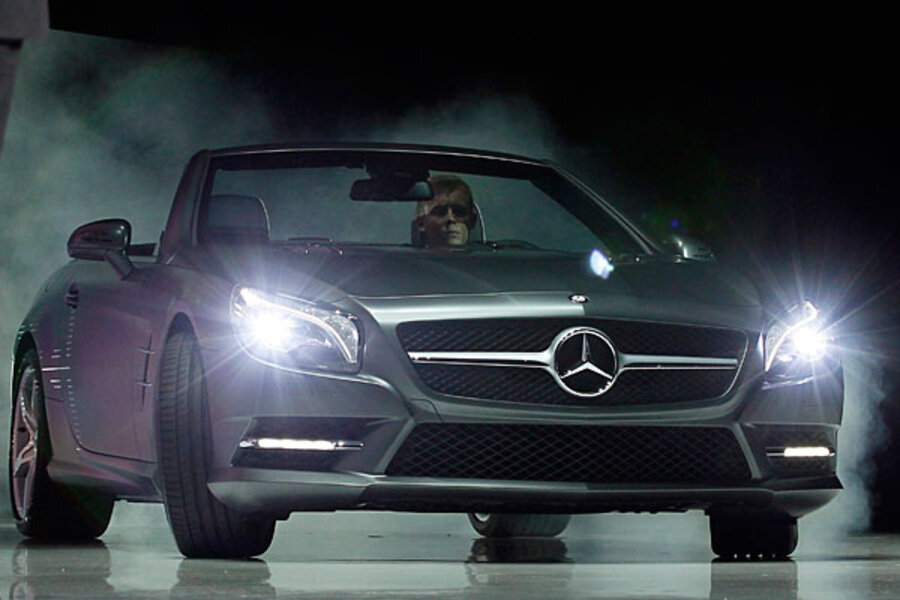CES: Why car gadgets are making inroads at Las Vegas electronics show
Loading...
The annual International Consumer Electronics Show in Las Vegas allows tech geeks a chance each year to check out soon-to-launch gaming systems, flat-screen televisions, and mobile technology.
But this year, the show, which opened Tuesday and runs through Friday, will offer attendees a newly expanded area in which high tech is increasingly prevalent: their cars.
Detroit is leaving a bigger footprint than ever on the annual trade show, which is the world’s largest for consumer technology. Six of the top 10 automakers are exhibiting, one more than last year.
The Consumer Electronics Show (CES) is taking place the same week as the start of the North American International Auto Show (NAIA) in Detroit, a synergy that is not coincidental: According to the Consumer Electronics Association in Arlington, Va., the value of technological gadgetry that will be factory-installed in vehicles is expected to reach $7 billion in 2012, a 16-percent increase over 2011.
With more new vehicles designed to link buyers up with their smart phones, digital media players, and other portable devices, automakers’ sales pitches are increasingly accentuating the cars’ lifestyle components and not just their speed, body design, and performance.
“Automakers have really found that technology sells cars,” says Doug Newcomb, senior technology editor for Edmunds.com, who is attending the trade show this year.
As consumers show more reliance on portable devices, carmakers are now eager to show them how they can use them seamlessly on the road.
Ford’s voice-controlled Sync entertainment system started the ball rolling for hands-free technology. The automaker launched Sync in 2007, when no other domestic automaker seemed to consider dashboard electronics to be of much importance beyond car stereos systems and thermostat controls.
Sync allows drivers to access all their portable devices via a touchscreen; a smart-phone app – launched this week at the tradeshow – gives drivers verbal alerts on daily deals when they drive past retail or restaurant locations they pre-assign with importance.
Another sign car companies are getting serious about in-car technology is their budding network of alliances in Silicon Valley.
This month Ford announced it is opening a research lab in Silicon Valley, near Stanford University in Palo Alto, Calif. The company says it will employ about 15 people tasked with keeping abreast of trends and bringing it back to the company’s headquarters in Dearborn, Mich.
Silicon Valley is also home to research labs operated by General Motors, BMW AG, and the Renault-Nissan alliance. Many automakers are partnering with tech kingpins like Google and Microsoft to develop proprietary systems in their vehicles.
“Who would have thought of Ford as a technology company? That is part of the reason they’re here. They want to be seen as a technology company, especially in a market where cars have gotten so good and there’s not many differentiating factors,” says Mr. Newcomb.
All three domestic car companies, Ford Motor Co., General Motors, and Chrysler, are exhibiting at the tradeshow alongside Kia, Audi, and Mercedes. Among the devices promoted this week are MyLink, a dashboard system designed for the Chevy Sonic and Spark, and Drive Style, an iPhone app for all 2013 Mercedes models that allows users to interact with the vehicle remotely.
The evolution follows the strong comfort level consumers have now reached with their personal devices. According to a survey released this month by Accenture, a market research company in New York, 91 percent of respondents who currently do not have in-dash systems wish they did to make phone calls, while 79 percent wanted them to stream music.
The company reports that the growing appeal of in-dash systems is likely to result in $200 in additional revenue per vehicle.
In addition to the new product launches, this year’s CES is also featuring keynote speakers by top automotive industry executives. Ford’s president and CEO, Alan Mulally, is the keynote speaker Wednesday, while Daimler AG’s board chairman, Dieter Zetsche, is the keynote speaker Thursday.
CES is the largest consumer electronics tradeshow in the world and is expected to draw more than 140,000 attendees.





